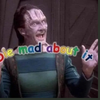A few years ago I got a Gorilla brand granite mortar and pestle. I seasoned it as directed and got quite a bit of use out of it, then I stopped cooking for a while and it got kind of…well, gross. It’s possible that I spilled something on it, but portions of the bowl and exterior are a darker color now. I guess I’m afraid with the relatively porous granite that it’s full of rancid garlic effluvium. Does anyone know how to clean this thing? Should I just pitch it?
Before: https://imgur.com/a/lWyQNGH
After: See Google album link (I tried again to use imgur and my phone crashed 😆)
Alt share because imgur is being a pain: https://photos.app.goo.gl/LzXZoxnhdEvmQHug7
Edit: Edited to include links to “before” images. Edit #2: Added a backup Google album Edit #3: Added after images to Google album


Lye would only be used in the soponification of oil in hard or bar soap. Sodium hydroxide is used for soft soap. So if that’s something you’re looking for, I’d recommend Dr. Bronzer’s Sal Suds. It’s specially made for dishes and laundry as the reaction is 1:1. This is in contrast to bath products (ie bar soap or liquid soap, not like dove but like ones you could get at the farmer’s market, etc), which do something called super fatting. Super fatting is an out of balance reaction, leaving some unsuponified left over oil for moisturizing. Sometimes, laundry bars and KOH soft soap can even have a reaction that would leave a very small bit of lye or Sodium hydroxide unreacted for cleaning purposes, only sometimes. That’s why it’s not recommended to use them in the shower as they can be drying on the skin.
I realize you’re referring to detergents in your post, but I thought I’d clear that up. I make soap. Lol.
Dr. Bronzer’s Sal Suds is pretty great and it has a very subtle pine smell that doesn’t stick around.
edit: clarification